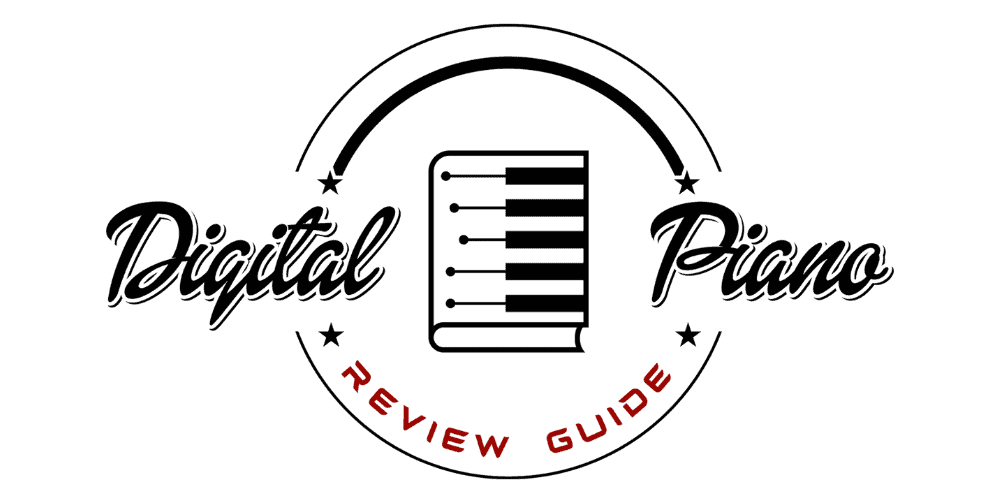Roland FP-60X vs Roland FP-90X: Best Roland Piano?
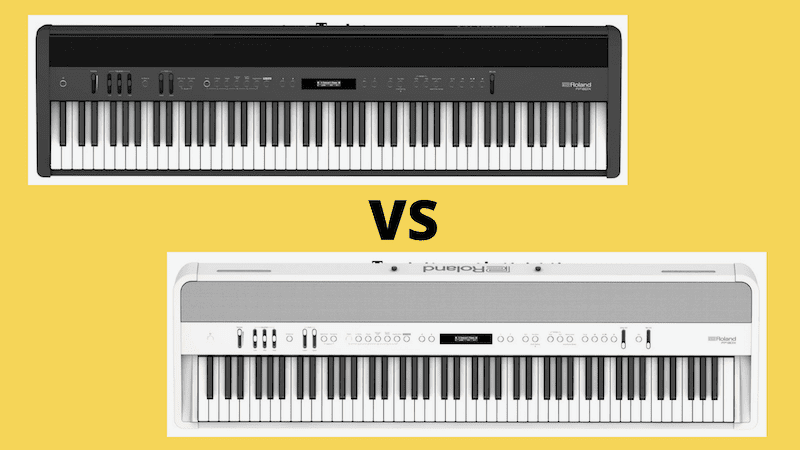
When it comes to making digital pianos, Roland is one of the top performers. While they design and manufacture everything from electronic drumsets and guitar effects pedals to audio mixers and software instruments, they have a particular knack for creating high quality keyboard instruments.
Having made digital pianos and synthesizers since the 1970s, and having contributed many advances in keyboard technology since that time, Roland is no stranger when it comes to keyboard design. In this Roland FP-60X vs Roland FP-90X article, we will be comparing their two most advanced portable digital piano models in order to figure out which one best suits your needs as a musician.
Released in 2021, Roland’s FP-X series is the latest and most technologically advanced offering in their selection of portable digital pianos, and at the top of that line is the Roland FP-60X model and the flagship Roland FP-90X model. These two digital pianos both offer great features and have a lot of similarities, but at very different price points, so it can be confusing to determine which one is better.
In order to clear up any confusion you might have, we will take a look at their quality, how they sound and feel, what features they offer, and what the differences between them are.
Below, take a moment to view some of the most popular pianos on the market, and see how well they compare to the Roland FP-60X and Roland FP-90X.
| Photo | Model |
|---|---|
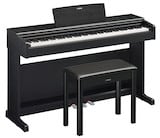 | Yamaha YDP-145 |
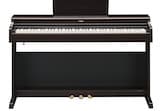 | Yamaha YDP-165 |
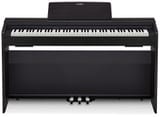 | Casio PX-870 |
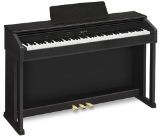 | Casio AP-470 |
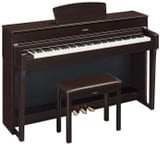 | Yamaha YDP-184 |
Quality and Design
When selecting any digital piano, it’s important to choose a model that can stand up to the rigors of constant use, transportation, and the passage of time. Fortunately, Roland’s FP-X series pianos do a great job of passing muster.
Both the FP-60X and FP-90X are aimed at intermediate to professional level musicians, so Roland has put a good deal of effort into making sure both products meet a high quality standard that professional musicians will be happy with. Beginner players and professionals alike will enjoy the care that Roland has put into their FP-X line of keyboards.
In terms of construction, both models are well-made. They’re relatively heavy (the FP-60X weighs in at 42 pounds, while the FP-90X weighs 52 pounds), and this weight provides a feeling of sturdiness that stands in stark contrast to the lightweight and fragile feeling of many entry-level keyboards. Both models generally feel robust and capable of standing up to a good amount of use and abuse, and the materials that Roland selected for use in their construction are of good quality.

The two models are extremely similar in terms of looks and design, which is to be expected considering the fact that they come from the same product line. The design of the FP-X line is aesthetically pleasing; it is relatively simplistic, yet modern looking. Unlike other digital pianos that have an endless array of buttons and options, the simple design and layout of these two models make it easy to quickly locate whatever feature you need to access at any given time.
Both the FP-60X and the FP-90X feature a digital screen in the middle, with a clean and simple array of buttons and sliders on either side. The only front panel design difference between the two models is the addition of a ‘Song Volume’ slider and ‘Mic’ button on the FP-90X. On the back of each model you’ll find a variety of inputs and features, which we’ll get into in the Connectivity section.
While the 132×132 high contrast LCD screen in the middle of both models is rather small, it’s surprisingly easy to use it to navigate all the features that the pianos have to offer. The buttons on both models are backlit and have a high quality feeling to them. They feel satisfying to press thanks to the elastic coil springs that are featured underneath each button. The faders are similarly of good quality – they have a good bit of resistance to them, making it easy to dial in fine-tuned changes.
When it comes down to any difference in quality between the two models, you’d be hard-pressed to find any that are significant. Both models feel like they were designed with care and a high regard to quality and longevity, and you can’t go wrong with either model if you’re looking for something that will last a long time.

Below, please take a moment to view some of the best selling digital pianos on the market, and see how well they compare to the Roland FP-60X and 90X:
| BEST SELLERS |
|---|
| 1) Yamaha P-515 |
| 2) Casio PX-S3100 |
| 3) Casio PX-870 |
| 4) Roland FP-E50 |
| 5) Roland FP-30X |
Keys
While many digital pianos come with cheap plastic keys that make it difficult to express yourself fully on, both the FP-60X and FP-90X feature 88 full-sized weighted keys that feel high quality and satisfying to play on. The weighted keys provide a great deal of responsiveness and sensitivity, providing you with a feeling similar to that of playing on a real acoustic piano.
These two models do not have the exact same keys, however. The main difference to note between the two models in terms of key quality is that they use different keybeds (this term refers to the keys of a keyboard as well as their underlying mechanisms). More specifically, they both use different keybeds from Roland’s PHA (Progressive Hammer Action) series. The PHA series’ key action attempts to replicate the feeling of a real piano, and upon playing on any set of PHA series keys, you’ll notice that the lower keys are heavier and the higher keys are lighter, much like on a real piano.
The FP-60X uses the PHA-4 Standard keybed. The keys are made of plastic and the keytops feature synthetic ivory and a matte finish. The keybed features triple sensors, which provide a high level of accuracy in recording your key presses. The synthetic ivory feels quite nice, and the key action makes it easy to play accurately and expressively. Despite the fact that the PHA-4 is at the lower end of Roland’s PHA series keybeds, the keys play surprisingly similarly to that of a real piano.
The FP-90X on the other hand, uses Roland’s PHA-50 keybed. What’s unique about this keybed is that it utilizes wood construction with synthetic ivory keytops, providing an extremely realistic playing experience, coming even closer to the real thing than the PHA-4 does. It also has what Roland describes as an “escapement” feature, which mimics the let-off feeling you get when pressing a piano key very softly.
Roland’s goal with the PHA-50 was to replicate the feeling of an acoustic piano as closely as possible, and with all of the nuance they’ve put into designing it, it would be difficult to tell it apart from a real piano in a blindfolded test.
At the end of the day, while the FP-90X provides a noticeable upgrade over the feel of the FP-60X, both pianos do an excellent job of replicating the feel of the real thing. If you want to get as close to the feeling of a real piano as possible, it’s worth investing the extra money into the FP-90X, but its younger sibling also does a fantastic job of providing a lifelike experience.
Sound
Alongside the key quality, the sound is arguably the most important aspect of any digital piano. Luckily, Roland has kept this in mind when designing both the FP-60X and the FP-90X.
The FP-60X features Roland’s SuperNATURAL sound generator, which is capable of up to 256 note polyphony. SuperNATURAL samples all 88 keys of an acoustic piano, providing a very realistic sound experience, and the sound engine is adept at recreating the response you get when pressing on a traditional piano key with varying levels of force (velocity). The lifelike velocity curve that Roland designed for the SuperNATURAL is useful for recreating the same kind of expressive playing that you can accomplish on a real piano.
The FP-90X, meanwhile, doesn’t have the SuperNATURAL sound engine, but instead features Roland’s Pure Acoustic Piano Modeling system. This sound engine is the latest and most impressive piano modeling offering from Roland, and it differs from the SuperNATURAL sound engine in that it uses significantly more advanced technology to provide an even more realistic sounding piano experience – it’s basically an improved iteration of what’s found in the FP-60X.
The sound is richly detailed and lifelike, and the level of detail offered is especially noticeable when listening over headphones. Additionally, this sound engine is capable of providing unlimited polyphony, compared to the 256-note polyphony capability of the SuperNATURAL sound engine.
You can finely sculpt your sound within both models using Roland’s powerful Piano Designer and My Stage features. Piano Designer allows you to individually customize the sound of all 88 individual notes, providing you with endless ways to fine tune your sound to perfection. Some of the parameters it allows you to adjust include string resonance, damper resonance, and temperament.
It also allows you to control the volume, tone, and tuning of each individual key. While these in-depth features may fly over the head of less experienced players, a professional player will surely appreciate the great amount of control the FP-X series allows over your piano sound via Piano Designer.
Complementing the powerful features of Piano Designer, the My Stage feature offers a quick and easy selection of different piano performance environments, allowing you to refine the ambiance level of your sound. Some of the available environment options include Lakeside Studio, Heritage Hall, Lounge Concert, Jazz Club, and Recording Studio.
There are some differences between the FP-60X and the FP-90X when it comes to tone shaping options. Within My Stage, the FP-90X gives four additional performance environments to select from: Medieval Salon, Trad Opera House, East Coast Hall, and Impressionists. While these four additional ambiance options aren’t enough to recommend the FP-90X over its sibling, there are a few additional options it has that are worth looking into if you’re serious about sculpting a professional sound and having complete control over your piano tone.
Features that mimic the mechanical workings of an acoustic piano are offered on the FP-90X within Piano Designer, such as the Key Off Noise parameter, which replicates the sound of the action noise when you release an acoustic piano key, as well as the Hammer Noise parameter, which replicates the noise made by an acoustic piano’s hammer striking the piano string. Additional options exclusive to the FP-90X include Cabinet Resonance, Soundboard Type, and Damper Noise.
While both models sound fantastic and offer warm, lifelike piano sounds, the FP90-X is the superior sounding option. With its improved sound engine and additional tone shaping options, it comes closer to sounding like a real piano than the FP60-X does.
Connectivity
Besides how a keyboard instrument looks, sounds, and feels, it’s important that your instrument also offers you the ability to use it in any context or situation that you might need it in, and that it provides adequate functionality. With that in mind, the next agenda item for this Roland FP-60X vs Roland FP-90X article is to determine whether or not both models offer the connectivity you’ll need as a musician.

In back, both models feature three pedal inputs (Soft, Sostenuto, and Damper). This is an important feature to have, as it allows you to use all three pedals that you would find on a real acoustic piano, allowing for even more realistic playing capability. Many digital pianos only feature one pedal input, often for a damper pedal, so having the option to add the soft pedal and the sostenuto pedal really opens up your performance possibilities and helps to provide a realistic experience.
Both models also feature a microphone input, which comes with its own gain button. This input allows you to connect a microphone to your digital piano, meaning you can pipe your voice through the piano’s speakers or to one of its outputs, and you can even add effects to your voice, such as compression, reverb, and doubling.
An auxiliary input on both models allow you to plug your phone or another audio source into your piano. This means you can play along with any music track you might have handy, which is great for both learning and practicing.
The main row of inputs on each unit is rounded out by a speaker on/off switch and a pair of stereo outputs, which you can use to connect the piano to external speakers, an audio mixer, or a PA system. You can also use these outputs to connect one or two pairs of headphones, which comes in handy for quiet tutoring sessions or duets. Each unit also has a DC power input.
Above the main row of inputs on the FP-90X, and below the main row on the FP-60X, there are two USB ports. One is a USB Computer port, which allows you to connect your piano to a computer. The other USB port is for plugging in a USB memory stick. You can play audio files in either WAV and MP3 format from a USB drive, and you can also save recordings to the drive.
The only real difference between the FP-60X and the FP-90X in terms of hardware connectivity is the inclusion of dedicated MIDI in/out ports on the FP-90X. While you can use the USB Computer slot on the FP-60X for MIDI connectivity, the lack of dedicated MIDI ports on a model at this price range is rather disappointing, and it’s nice to see those ports included on the FP-90X.
Finally, in addition to the hardware ports, both models feature Bluetooth connectivity. You can use this feature for a myriad of functions, such as streaming audio from your phone to your piano’s speakers and using Roland’s Piano Every Day app to access Piano Designer on your phone. Be aware that some users have had difficulty getting Roland’s Bluetooth connectivity to function properly.
In the end, both models have very similar hardware and connectivity options, and the FP-90X doesn’t provide anything special over the FP-60X with the exception of dedicated MIDI ports. Unless you need that additional bit of connectivity, both models are pretty evenly matched.
Features
In addition to the fantastic sounding piano tones, both the FP-60X and the FP-90X feature additional keyboard voicings, such as Electric Piano, Organ, Strings, and Synth. Each of these alternate voicings have different tone patches that you can select from.
For example, within the Organ voicing, you can choose from patches such as Pipe Organ, Ballad Organ, Combo Jazz Organ, two different Church Organ options, and even Accordion. This is a great way to explore a large variety of keyboard sounds and it allows your instrument to provide a great deal of versatility. While the FP-60X and the FP-90X feature the same alternate voicing patch options, it’s worth noting that the FP-90X includes a few additional piano tone patch options that the FP-60X doesn’t provide.
Aside from the additional voicing options, another nice feature that the FP-X series provides is the inclusion of a variety of songs you can play along to, which are stored in the unit’s internal memory. These songs include everything from French folk songs to Chopin pieces. While both models mostly contain the same pieces of music, the FP-90X includes two additional pieces of music not present on the FP-60X. The included manual (which is actually the same for both models) includes sheet music for Elevations and Reflection, two pieces of piano music that were composed specifically for inclusion on FP-X digital pianos.
Both models also include features such as a simple metronome function, the ability to change the contrast and brightness of the LCD display, the option to adjust the button backlight brightness, and the ability to store your saved piano sounds. They both also offer the ability to split the keyboard, meaning you can use one voicing on one half of the keyboard, and another on the other half.
The FP-60X and the FP-90X are very similar in terms of features, and the more expensive model doesn’t have anything noteworthy to offer over the FP-60X, aside from the addition of two dome tweeters that provide a slightly better speaker experience.
Accessories
Both Roland piano models come with the same accessories included in their packaging -an owner’s manual, a power cable, a music rest, and a damper pedal.
According to Roland’s website, both units also have a variety of additional accessory options available for separate purchase, such as the KPD-90 pedalboard (which combines the sostenuto, damper, and soft pedals into one pedalboard). There are also a variety of keyboard stands, pedals, and carrying bags available.
The only accessory that Roland provides that isn’t compatible with both models is a keyboard stand. Because of the size difference between the two models, they each have their own separate keyboard stand available. In this case, you can get a KS-20X stand, which would work great and looks quite nice too.

The Best Roland Piano Is…?
When deciding between two models that are so similar, it can be tough to choose which one is best for you. Both offer great features and showcase Roland’s impressive knack at designing technologically advanced musical equipment, but which model you choose really comes down to how realistic you need your digital piano to sound and feel.
If you’re a professional piano player who is in need of a versatile and portable option to replace the real thing, you’re probably going to want to select the Roland FP-90X. With its superior keybed and sound engine, this digital piano comes wondrously close to replicating the sound and feel of the real thing, and it should last for a lifetime of playing.
However, if you’re not a professional musician, are less experienced with playing, or if you’re simply concerned about cost, the Roland FP-60X still provides an amazing playing experience at a lower price point. It’s highly recommended that you save the extra $1150 and choose this model over its much more expensive counterpart if you don’t make a living playing piano, or if you can’t justify spending almost twice as much.
It’s hard to go wrong with either model, and in this Roland FP-60X vs. Roland FP-90X
showdown, it ultimately comes down to whether or not you need the more advanced features and design nuance the Roland FP-90X provides to those making a living as a professional musician.
If this article helped you, please “like” our Digital Piano Review Guide Facebook page!
If you enjoyed this article, you might also like:
